- Clone
- S5/1 (See other available formats)
- Regulatory Status
- RUO
- Workshop
- HCDM listed
- Other Names
- C5a ligand, C5a anaphylatoxin receptor, C5AR, C5R1, C5AR1
- Isotype
- Mouse IgG2a, κ
- Ave. Rating
- Submit a Review
- Product Citations
- publications
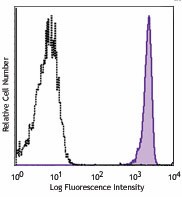
-

Human peripheral blood granulocytes were stained with CD88 (clone S5/1) APC (filled histogram) or mouse IgG2a, κ APC isotype control (open histogram).
| Cat # | Size | Price | Save |
|---|---|---|---|
| 344309 | 25 tests | ¥32,780 | |
| 344310 | 100 tests | ¥71,720 |
CD88 is a single chain protein with seven membrane-spanning regions and has a MW of 43 kD. CD88 is expressed by monocytes, neutrophils and eosinophils. Also, there have been reports of CD88 expression in non-immune cells such as glial cells, cerebellar granule cells, cardiomyocytes and vascular endothelial cells. CD88 is coupled to heterotrimeric G proteins such as Gi, and after C5a binding, the signal transduced by CD88 results in the activation of PLCβ, PI-3 kinase, and PLA2, among other molecules, resulting in chemotaxis, granule enzyme release and superoxide anion production.
Product DetailsProduct Details
- Verified Reactivity
- Human
- Reported Reactivity
- African Green, Baboon
- Antibody Type
- Monoclonal
- Host Species
- Mouse
- Immunogen
- Recombinant peptide huC5aR N-terminal -NT (Asp15-Asp27)
- Formulation
- Phosphate-buffered solution, pH 7.2, containing 0.09% sodium azide and BSA (origin USA)
- Preparation
- The antibody was purified by affinity chromatography and conjugated with APC under optimal conditions.
- Concentration
- Lot-specific (to obtain lot-specific concentration and expiration, please enter the lot number in our Certificate of Analysis online tool.)
- Storage & Handling
- The antibody solution should be stored undiluted between 2°C and 8°C, and protected from prolonged exposure to light. Do not freeze.
- Application
-
FC - Quality tested
- Recommended Usage
-
Each lot of this antibody is quality control tested by immunofluorescent staining with flow cytometric analysis. For flow cytometric staining, the suggested use of this reagent is 5 µl per million cells in 100 µl staining volume or 5 µl per 100 µl of whole blood.
- Excitation Laser
-
Red Laser (633 nm)
- Application Notes
-
Clone S5/1 blocks the binding of C5a to CD88.
-
Application References
(PubMed link indicates BioLegend citation) -
- Kiener HP, et al. 1998. Arthritis Rheum. 41:233.
- Elsner J, et al. 1994. Blood 83:3324.
- Oppermann M, et al. 1993. J. Immunol. 151:3785.
- Product Citations
-
- RRID
-
AB_11203540 (BioLegend Cat. No. 344309)
AB_11204420 (BioLegend Cat. No. 344310)
Antigen Details
- Structure
- CD88 is a single chain protein with seven membrane-spanning regions and a MW of 43 kD.
- Distribution
-
CD88 is expressed by monocytes, neutrophils and eosinophils. There has been reports of CD88 expression in non-immune cells such as glial cells, cerebellar granule cells, cardiomyocytes and vascular endothelial cells.
- Function
- After C5a binding, the CD88 signal results in chemotaxis, granule enzyme release and superoxide anion production.
- Interaction
- CD88 is coupled to heterotrimeric G proteins such as Gi. The signal transduced by CD88 results in the activation of PLCβ, PI-3 kinase, and PLA2, among other molecules.
- Cell Type
- Eosinophils, Monocytes, Neutrophils
- Biology Area
- Cell Biology, Cell Motility/Cytoskeleton/Structure, Immunology, Innate Immunity, Neuroinflammation, Neuroscience
- Molecular Family
- CD Molecules
- Antigen References
-
1. Schraufstatter IU, et al. 2009. J. Immunol. 182:3827.
2. Ippel JH, et al. 2009. J. Biol Chem. 284:12363.
3. Griffin RS, et al. 2007. J. Neurosci. 27:8699.
4. Lee H, et al. 2006. Nat. Biotechnol. 24:1279.
5. Buck E and Wells JA. et al. 2005. P. Natl. Acad. Sci. USA 102:2719. - Gene ID
- 728 View all products for this Gene ID
- UniProt
- View information about CD88 on UniProt.org
Related FAQs
Other Formats
View All CD88 Reagents Request Custom Conjugation| Description | Clone | Applications |
|---|---|---|
| Purified anti-human CD88 (C5aR) | S5/1 | FC,IHC-P |
| PE anti-human CD88 (C5aR) | S5/1 | FC |
| FITC anti-human CD88 (C5aR) | S5/1 | FC |
| PE/Cyanine7 anti-human CD88 (C5aR) | S5/1 | FC |
| APC anti-human CD88 (C5aR) | S5/1 | FC |
| PerCP/Cyanine5.5 anti-human CD88 (C5aR) | S5/1 | FC |
| APC/Fire™ 750 anti-human CD88 (C5aR) | S5/1 | FC |
| Alexa Fluor® 700 anti-human CD88 (C5aR) | S5/1 | FC |
| PE/Dazzle™ 594 anti-human CD88 (C5aR) | S5/1 | FC |
| TotalSeq™-C1046 anti-human CD88 (C5aR) | S5/1 | PG |
| APC/Cyanine7 anti-human CD88 (C5aR) | S5/1 | FC |
| TotalSeq™-B1046 anti-human CD88 (C5aR) | S5/1 | PG |
| TotalSeq™-A1046 anti-human CD88 (C5aR) Antibody | S5/1 | PG |
Customers Also Purchased
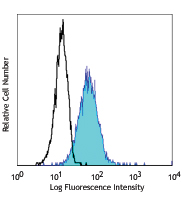
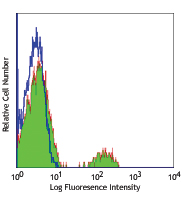
Compare Data Across All Formats
This data display is provided for general comparisons between formats.
Your actual data may vary due to variations in samples, target cells, instruments and their settings, staining conditions, and other factors.
If you need assistance with selecting the best format contact our expert technical support team.
-
Purified anti-human CD88 (C5aR)
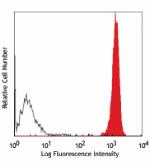
Human peripheral blood granulocytes stained with S5/1 PE 
IHC staining of purified anti-CD88 (C5aR) (clone S5/1) on fo... -
PE anti-human CD88 (C5aR)

Human peripheral blood granulocytes stained with S5/1 PE -
FITC anti-human CD88 (C5aR)
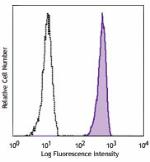
Human peripheral blood granulocytes were stained with CD88 (... -
PE/Cyanine7 anti-human CD88 (C5aR)

Human peripheral blood granulocytes were stained with CD88 (... -
APC anti-human CD88 (C5aR)
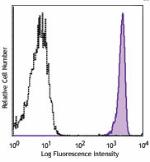
Human peripheral blood granulocytes were stained with CD88 (... -
PerCP/Cyanine5.5 anti-human CD88 (C5aR)
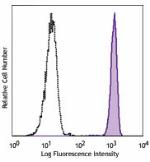
Human peripheral blood granulocytes were stained with CD88 (... -
APC/Fire™ 750 anti-human CD88 (C5aR)
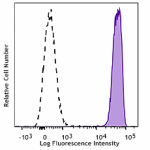
Human peripheral blood granulocytes were stained with CD88 (... -
Alexa Fluor® 700 anti-human CD88 (C5aR)

Human peripheral blood granulocytes were stained with CD88 (... -
PE/Dazzle™ 594 anti-human CD88 (C5aR)
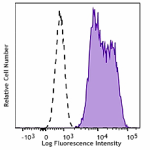
Human peripheral blood granulocytes were stained with CD88 (... -
TotalSeq™-C1046 anti-human CD88 (C5aR)
-
APC/Cyanine7 anti-human CD88 (C5aR)

Human peripheral blood granulocytes were stained with CD88 (... -
TotalSeq™-B1046 anti-human CD88 (C5aR)
-
TotalSeq™-A1046 anti-human CD88 (C5aR) Antibody










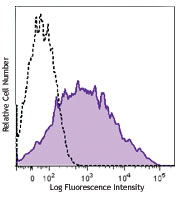




Follow Us